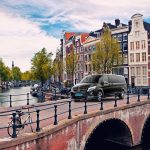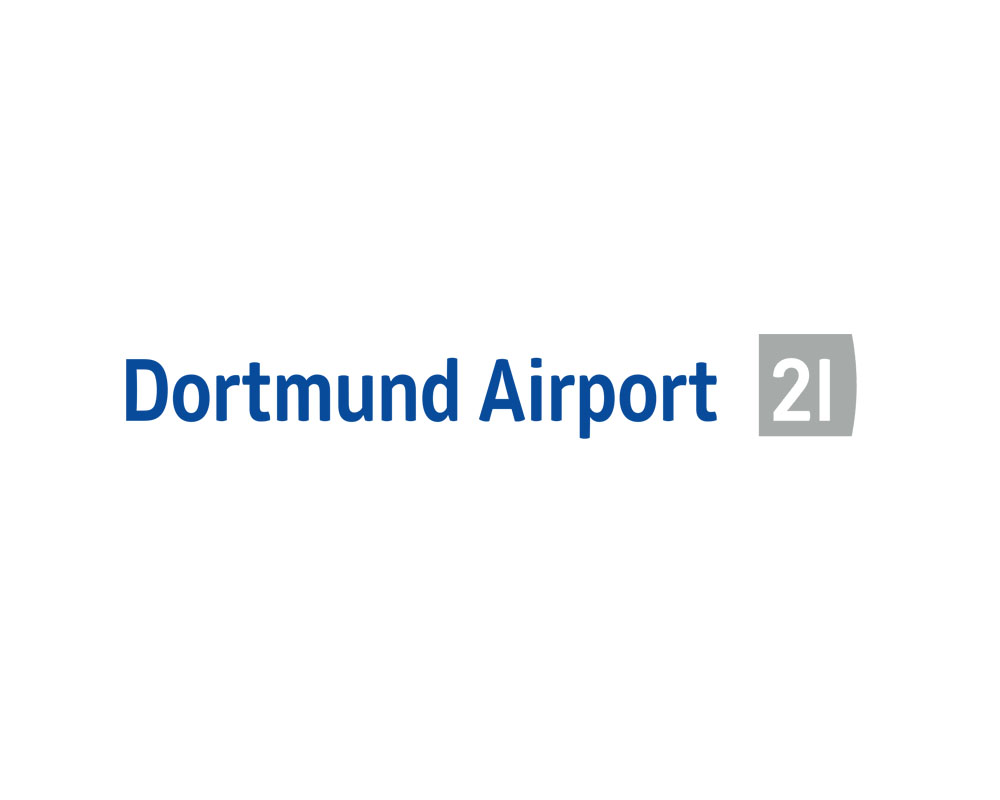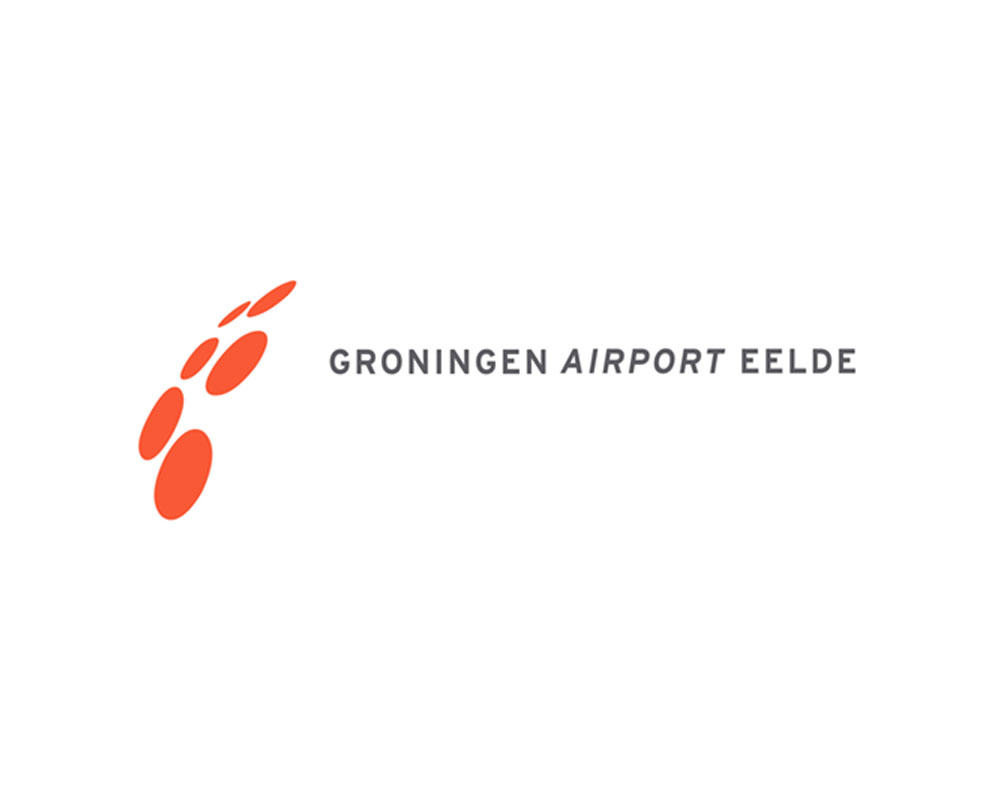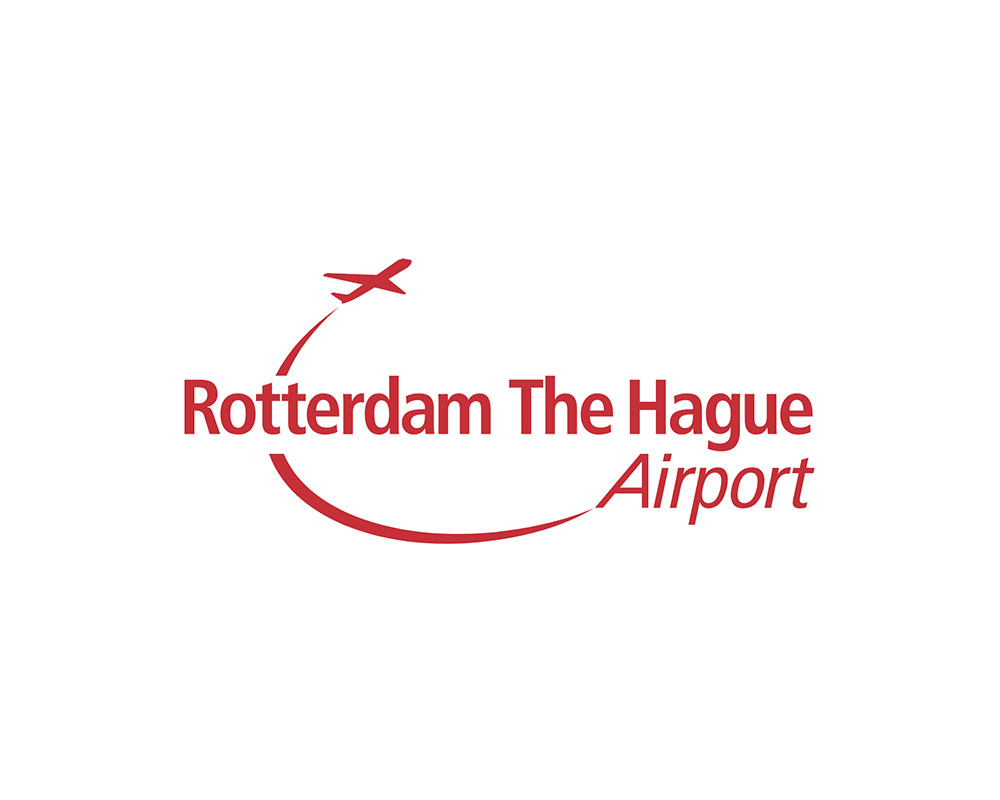Info
Description
Luxembourg City is the capital city of the Grand Duchy of Luxembourg, and the country’s most populous commune. Standing at the confluence of the Alzette and Pétrusse rivers in southern Luxembourg, the city lies at the heart of Western Europe, situated 213 km (132 mi) by road from Brussels, 372 km (231 mi) from Paris, and 209 km (130 mi) from Cologne. The city contains Luxembourg Castle, established by the Franks in the Early Middle Ages, around which a settlement developed. As of January 2019, Luxembourg City had a population of 119,214, which is more than three times the population of the country’s second most populous commune (Esch-sur-Alzette). In 2011, Luxembourg was ranked as having the second highest per capita GDP in the world at $80,119 (PPP),[3] with the city having developed into a banking and administrative centre. In the 2011 Mercer worldwide survey of 221 cities, Luxembourg was placed first for personal safety while it was ranked 19th for quality of living. Luxembourg is one of the de facto capitals of the European Union (alongside Brussels and Strasbourg), as it is the seat of several institutions, agencies and bodies of the European Union, including the European Court of Justice, the European Court of Auditors, the Secretariat of the European Parliament, the European Investment Bank, the European Investment Fund, and the European Stability Mechanism.
Book Luxembourg City Tour
Top-rated Sights & Attractions
Bock Casemates
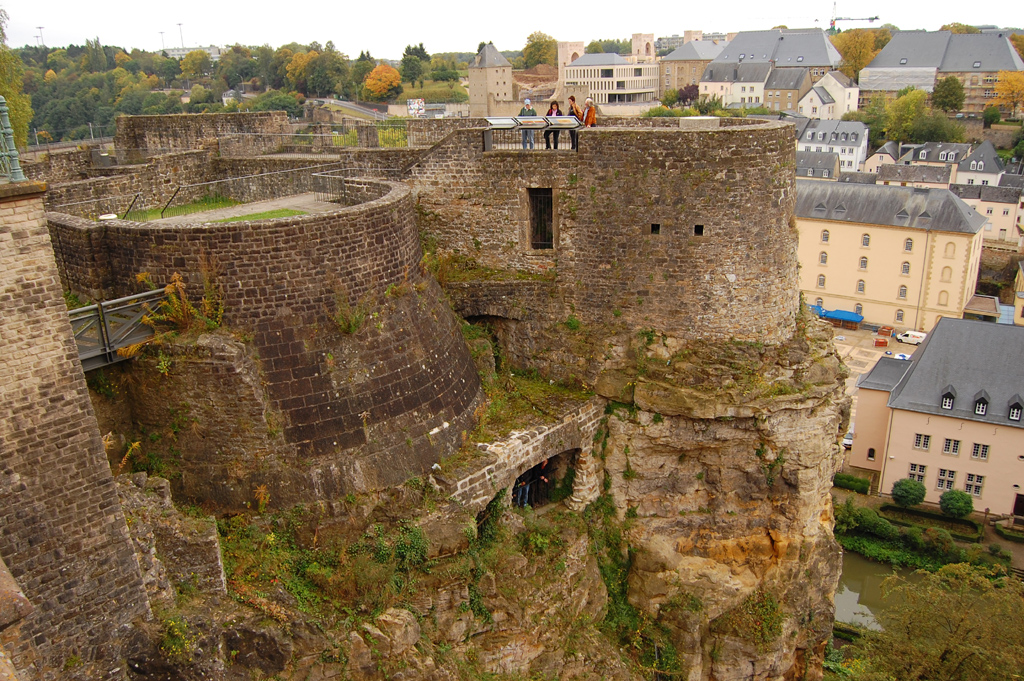 The Bock is a promontory in the north-eastern corner of Luxembourg City’s old historical district. Offering a natural fortification, its rocky cliffs tower above the River Alzette which surrounds it on three sides. It was here that Count Siegfried built his Castle of Lucilinburhuc in 963, providing a basis for the development of the town which became Luxembourg. Over the centuries, the Bock and the surrounding defences were reinforced, attacked and rebuilt time and time again as the armies of the Burgundians, Habsburgs, Spaniards, Prussians and French vied for victory over one of Europe’s most strategic strongholds, the Fortress of Luxembourg. Warring did not stop until the Treaty of London was signed in 1867, calling for the demolition of the fortifications. Ruins of the old castle and the vast underground system of passages and galleries known as the casemates continue to be a major tourist attraction.
The Bock is a promontory in the north-eastern corner of Luxembourg City’s old historical district. Offering a natural fortification, its rocky cliffs tower above the River Alzette which surrounds it on three sides. It was here that Count Siegfried built his Castle of Lucilinburhuc in 963, providing a basis for the development of the town which became Luxembourg. Over the centuries, the Bock and the surrounding defences were reinforced, attacked and rebuilt time and time again as the armies of the Burgundians, Habsburgs, Spaniards, Prussians and French vied for victory over one of Europe’s most strategic strongholds, the Fortress of Luxembourg. Warring did not stop until the Treaty of London was signed in 1867, calling for the demolition of the fortifications. Ruins of the old castle and the vast underground system of passages and galleries known as the casemates continue to be a major tourist attraction.
Grand Ducal Palace
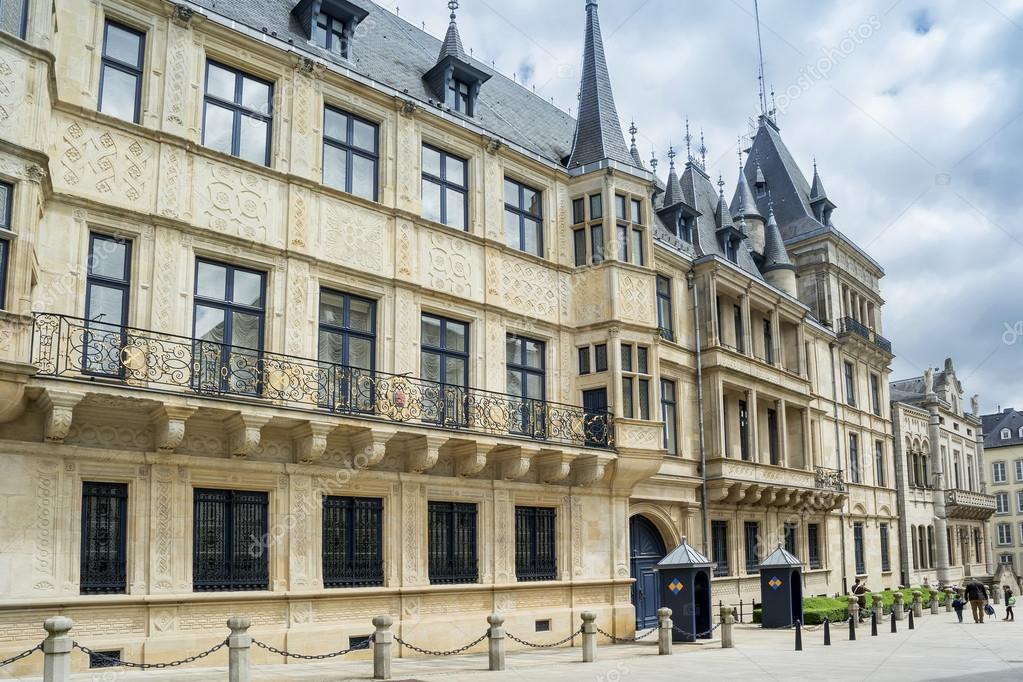 The Grand Ducal Palace is a palace in Luxembourg City, in southern Luxembourg. It is the official residence of the Grand Duke of Luxembourg, and where he performs most of his duties as head of state of the Grand Duchy.
The Grand Ducal Palace is a palace in Luxembourg City, in southern Luxembourg. It is the official residence of the Grand Duke of Luxembourg, and where he performs most of his duties as head of state of the Grand Duchy.
Place Guillaume II
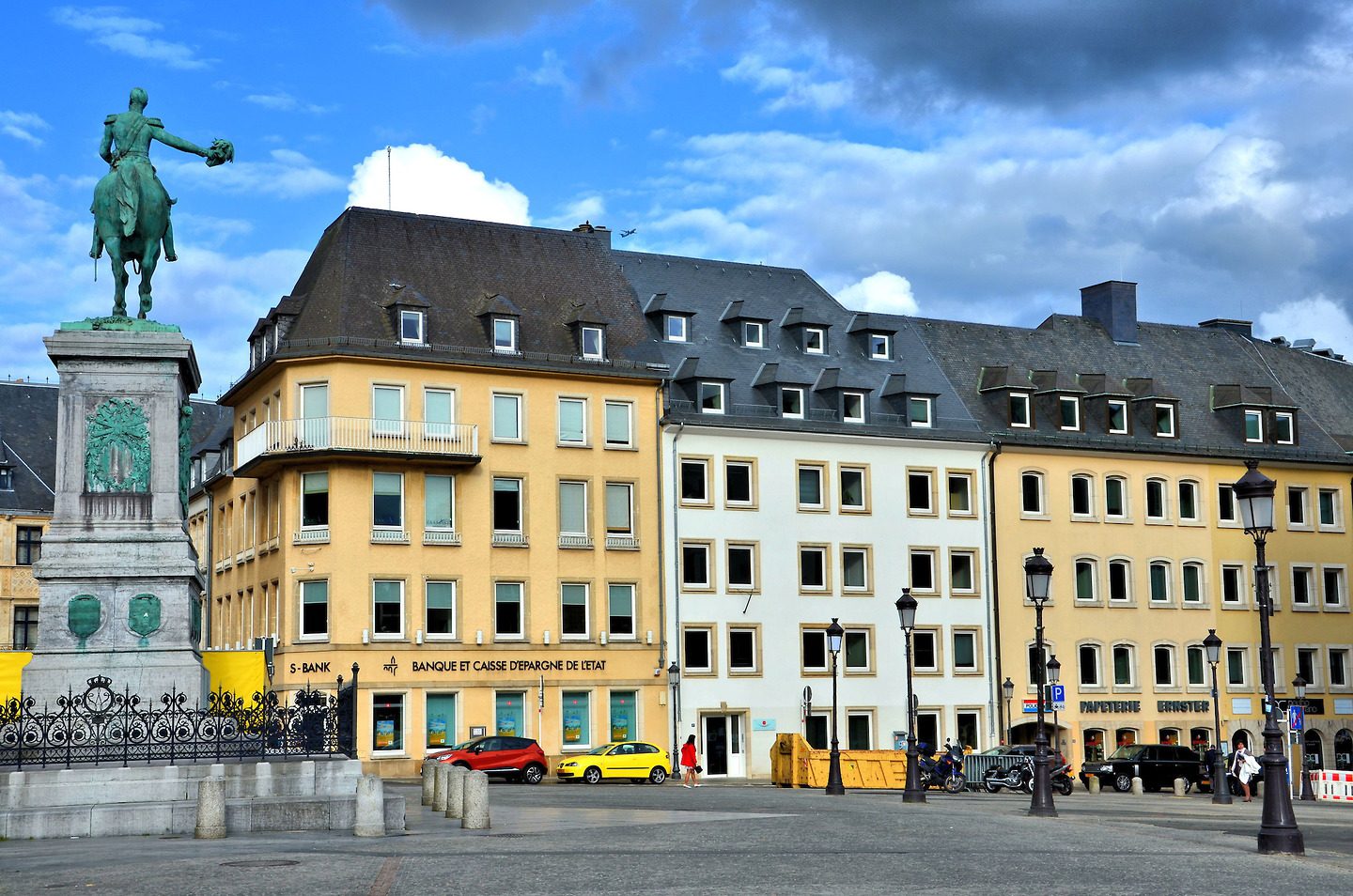 Place Guillaume II is a town square in Luxembourg City, in southern Luxembourg. The square lies to the west of Krautmaart and to the north of Boulevard Franklin Delano Roosevelt in the heart of Luxembourg’s historic Ville Haute quarter. It is colloquially known as Knuedler, from the Luxembourgish language’s word for ‘knot’, referring to the knot in the belt worn by Franciscan friars. The western half of the square is dominated by Luxembourg City Hall in the southwest, whilst the equestrian statue to former Grand Duke William II, after whom the square is named, is the prominent feature of the eastern half. Much of the square is ringed with trees, narrowing the open area (particularly around the statue). The square was originally the site of a Franciscan monastery, hence the colloquial name. However, in 1797, during the French Revolutionary Wars, the monastery was dispossessed by occupying French soldiers. In 1804, the visiting Napoleon presented Place Guillaume II to the city as a gift. In 1829, plans were put in place to build a new town hall on the square, based upon the plans of Belgian architect Justin Remont. That same year, the deconstruction of the former monastery was completed, the material from which was used in the new building.
Place Guillaume II is a town square in Luxembourg City, in southern Luxembourg. The square lies to the west of Krautmaart and to the north of Boulevard Franklin Delano Roosevelt in the heart of Luxembourg’s historic Ville Haute quarter. It is colloquially known as Knuedler, from the Luxembourgish language’s word for ‘knot’, referring to the knot in the belt worn by Franciscan friars. The western half of the square is dominated by Luxembourg City Hall in the southwest, whilst the equestrian statue to former Grand Duke William II, after whom the square is named, is the prominent feature of the eastern half. Much of the square is ringed with trees, narrowing the open area (particularly around the statue). The square was originally the site of a Franciscan monastery, hence the colloquial name. However, in 1797, during the French Revolutionary Wars, the monastery was dispossessed by occupying French soldiers. In 1804, the visiting Napoleon presented Place Guillaume II to the city as a gift. In 1829, plans were put in place to build a new town hall on the square, based upon the plans of Belgian architect Justin Remont. That same year, the deconstruction of the former monastery was completed, the material from which was used in the new building.
Walls of the Corniche
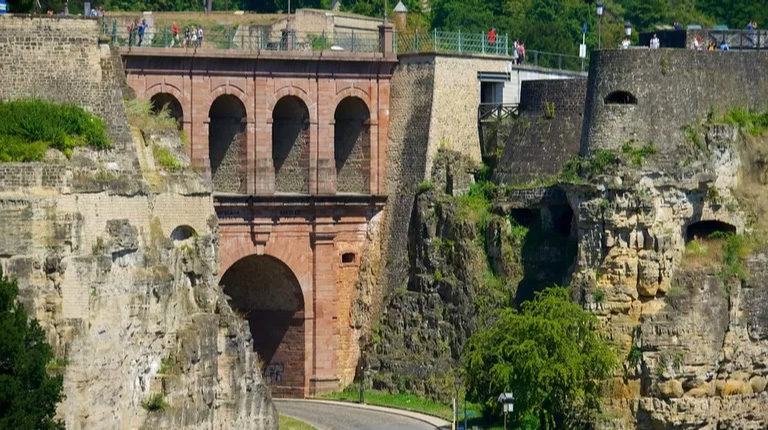 The spectacular Walls of the Corniche (le Chemin de la Corniche) in Luxembourg City have been called “the most beautiful balcony in Europe,” towering as they do over the old city in the river valley below. It’s here you’ll find the big Gate of the Grund dating from 1632. Its ramparts reveal several aristocratic houses and refuges, as well as the ancient convent of the Dominicans and St. Michael’s church (AD 987). In the suburb of Grund itself is a large cluster of buildings with the church and ancient Abbey of Neumünster, notable for its 17th-century cloister of Limoges, an organ dating from 1720, and a 14th-century “black virgin.” The adjacent buildings are part of the ancient Hospice St.-Jean, founded by Emperor Henri VII, Count of Luxembourg, in 1309.
The spectacular Walls of the Corniche (le Chemin de la Corniche) in Luxembourg City have been called “the most beautiful balcony in Europe,” towering as they do over the old city in the river valley below. It’s here you’ll find the big Gate of the Grund dating from 1632. Its ramparts reveal several aristocratic houses and refuges, as well as the ancient convent of the Dominicans and St. Michael’s church (AD 987). In the suburb of Grund itself is a large cluster of buildings with the church and ancient Abbey of Neumünster, notable for its 17th-century cloister of Limoges, an organ dating from 1720, and a 14th-century “black virgin.” The adjacent buildings are part of the ancient Hospice St.-Jean, founded by Emperor Henri VII, Count of Luxembourg, in 1309.
Old Town
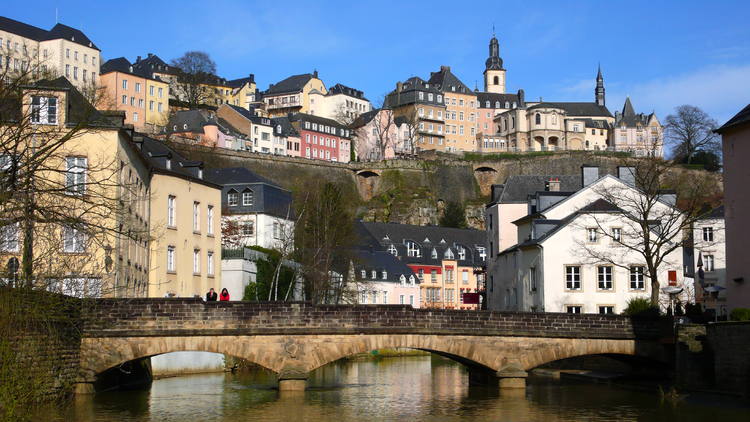 There’s no better place to begin exploring beautiful Luxembourg City than in its historic Old Quarter. Designated a UNESCO World Heritage Site in 1994, the city’s ancient fortifications made it one of the most important of Europe’s cities. The fortress was so impregnable, it was dubbed the “Gibraltar of the North,” and although the original fortress was dismantled between 1867 and 1883, its impact upon the Old Quarter is evident everywhere. Today, the old fortifications have given way to beautifully laid out parks and gardens, while its cobbled streets are lined with charming old homes and buildings. It’s a great place to spend a few hours exploring as you cross its many bridges – including the spectacular Adolphe Bridge, considered a city landmark – and traverse its many alleyways, preferably without a map (just follow your nose and see where you end up!). If you’re arriving by car, while there’s ample above-ground and underground parking, consider using one of the city’s excellent park-and-ride facilities.
There’s no better place to begin exploring beautiful Luxembourg City than in its historic Old Quarter. Designated a UNESCO World Heritage Site in 1994, the city’s ancient fortifications made it one of the most important of Europe’s cities. The fortress was so impregnable, it was dubbed the “Gibraltar of the North,” and although the original fortress was dismantled between 1867 and 1883, its impact upon the Old Quarter is evident everywhere. Today, the old fortifications have given way to beautifully laid out parks and gardens, while its cobbled streets are lined with charming old homes and buildings. It’s a great place to spend a few hours exploring as you cross its many bridges – including the spectacular Adolphe Bridge, considered a city landmark – and traverse its many alleyways, preferably without a map (just follow your nose and see where you end up!). If you’re arriving by car, while there’s ample above-ground and underground parking, consider using one of the city’s excellent park-and-ride facilities.
National Museum of History and Art
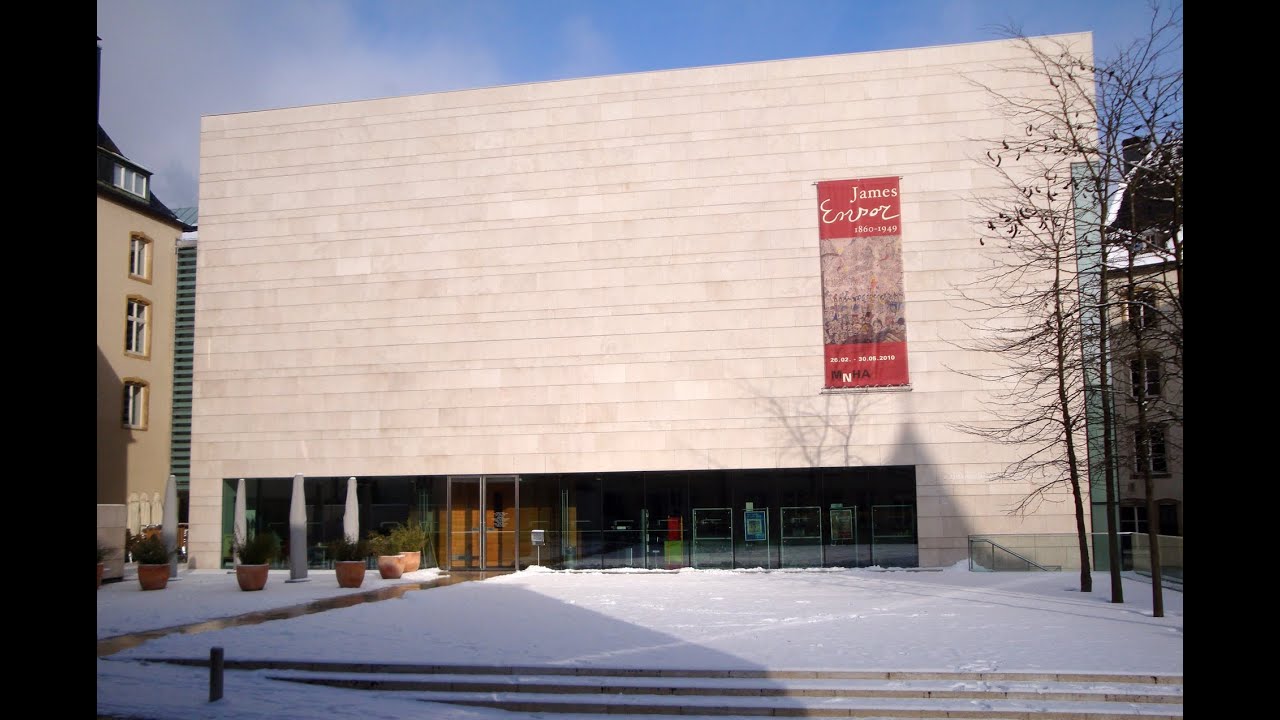 The National Museum of History and Art, abbreviated to MNHA, is a museum located in Luxembourg City, in southern Luxembourg. It is dedicated to displaying artworks and artefacts from all epochs of Luxembourg history. The museum is situated in Fishmarket, the historic heart of the city, in the Ville Haute quarter.
The National Museum of History and Art, abbreviated to MNHA, is a museum located in Luxembourg City, in southern Luxembourg. It is dedicated to displaying artworks and artefacts from all epochs of Luxembourg history. The museum is situated in Fishmarket, the historic heart of the city, in the Ville Haute quarter.
Mudam
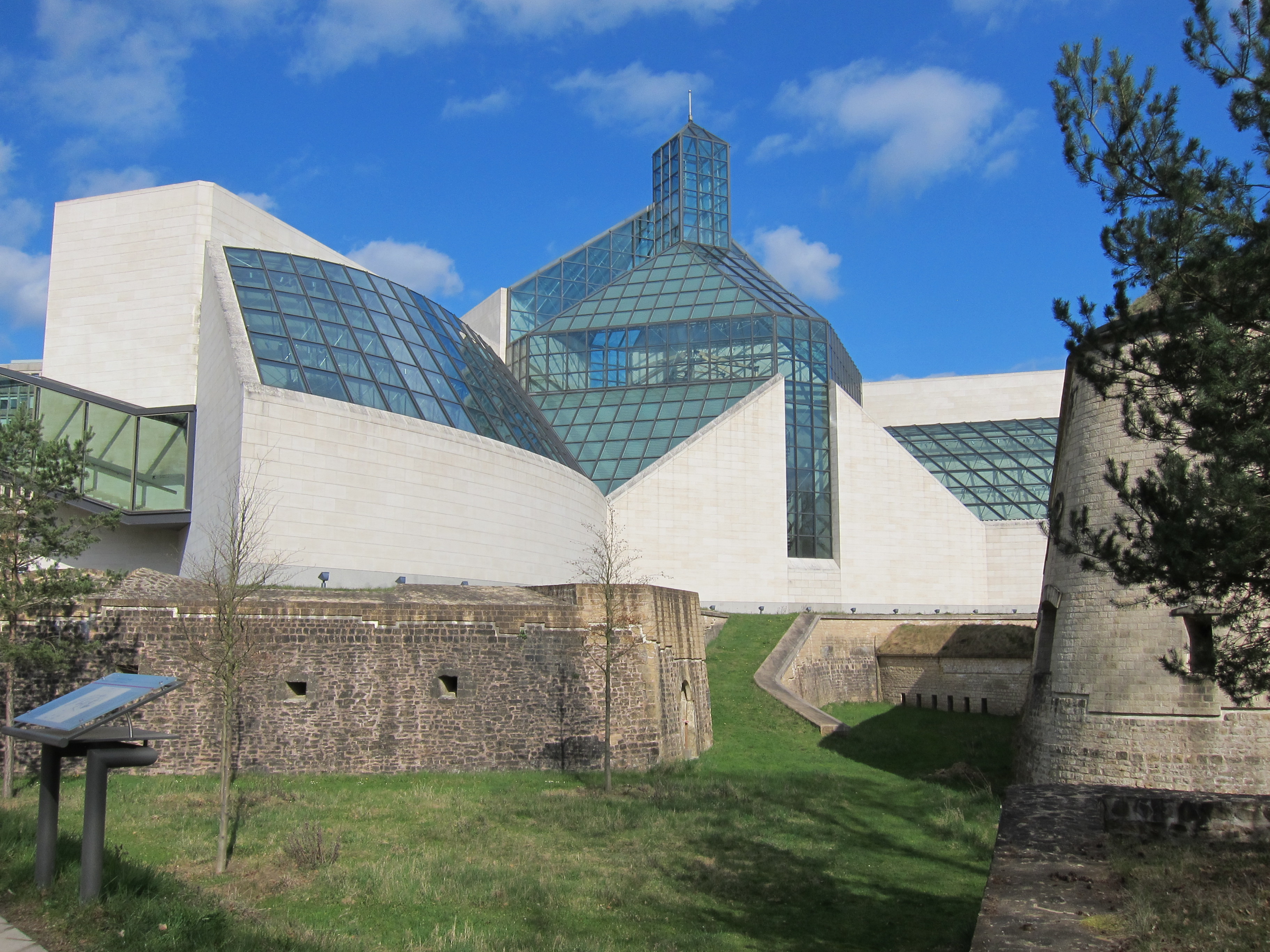 The Grand Duke Jean Museum of Modern Art, abbreviated to Mudam, is a museum of modern art in Luxembourg City, in southern Luxembourg. The museum stands on the site of the old Fort Thüngen, in the Clausen quarter, in the north-east of the city. First proposed in 1989 and championed by then-Prime Minister Jacques Santer, the location of the future museum was much disputed, until it was agreed in 1997 to use Dräi Eechelen Park and connect the museum to Fort Thüngen. The building was designed by Pritzker Prize-winning architect I. M. Pei, and cost $100m to build. The museum was inaugurated on 1 July 2006 by Grand Duke Jean, to whom the building is dedicated, and opened to the public the following day. The museum is directed by Enrico Lunghi. As Luxembourg had no public modern art collection and the museum budget did not allow acquiring a modernist collection, the museum focused on contemporary art – its permanent collection includes works by 100 artists, including: Andy Warhol, Bruce Nauman, Julian Schnabel, Thomas Struth, and Daniel Buren. In its first year being open to the public, the museum had more than 115,000 visitors, which is a record attendance in Luxembourg.
The Grand Duke Jean Museum of Modern Art, abbreviated to Mudam, is a museum of modern art in Luxembourg City, in southern Luxembourg. The museum stands on the site of the old Fort Thüngen, in the Clausen quarter, in the north-east of the city. First proposed in 1989 and championed by then-Prime Minister Jacques Santer, the location of the future museum was much disputed, until it was agreed in 1997 to use Dräi Eechelen Park and connect the museum to Fort Thüngen. The building was designed by Pritzker Prize-winning architect I. M. Pei, and cost $100m to build. The museum was inaugurated on 1 July 2006 by Grand Duke Jean, to whom the building is dedicated, and opened to the public the following day. The museum is directed by Enrico Lunghi. As Luxembourg had no public modern art collection and the museum budget did not allow acquiring a modernist collection, the museum focused on contemporary art – its permanent collection includes works by 100 artists, including: Andy Warhol, Bruce Nauman, Julian Schnabel, Thomas Struth, and Daniel Buren. In its first year being open to the public, the museum had more than 115,000 visitors, which is a record attendance in Luxembourg.
Luxembourg City History Museum
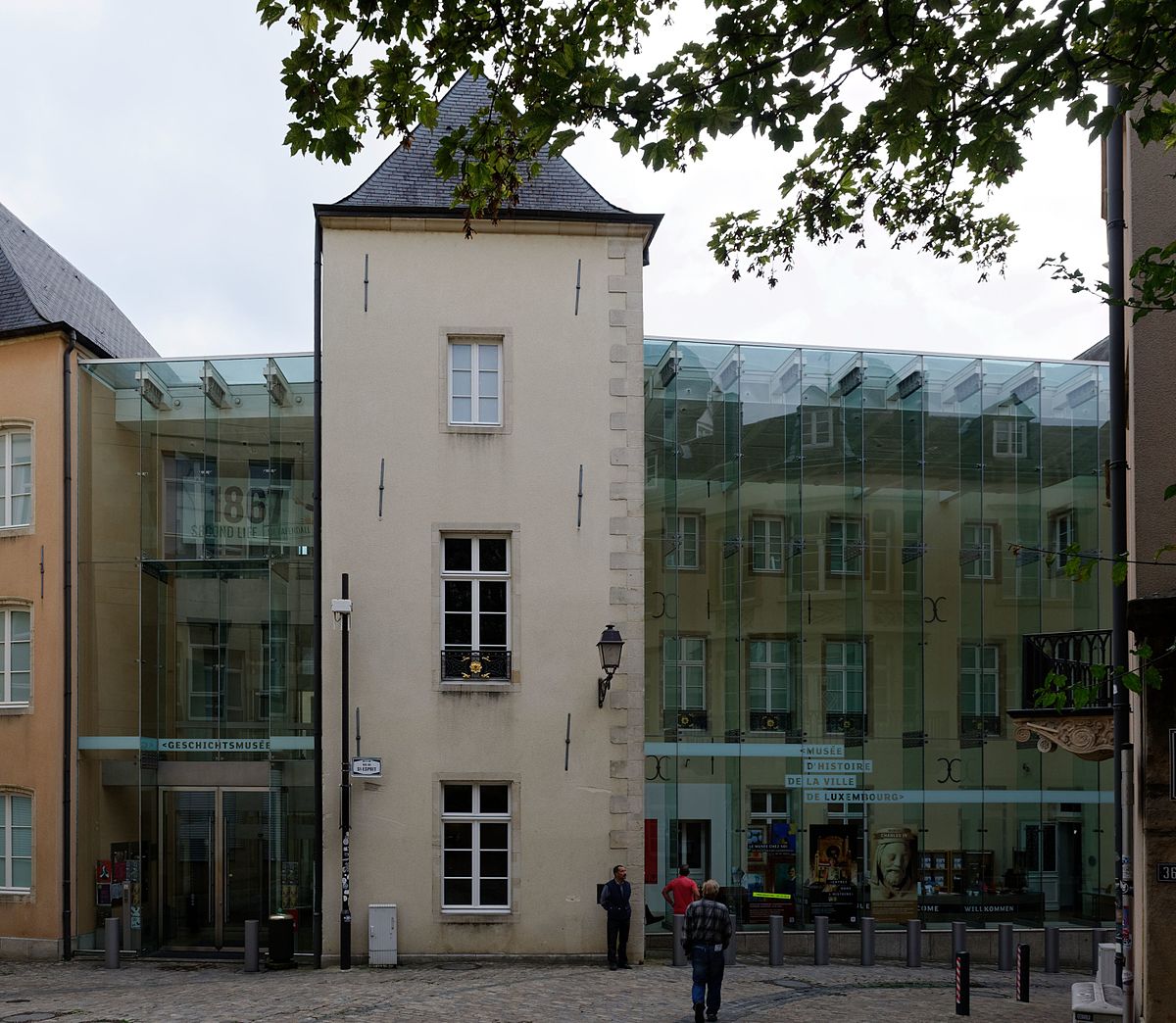 The Luxembourg City History Museum, illustrates the thousand-year history of the City of Luxembourg with both permanent and temporary exhibits. Founded on 22 June 1996, it was designed by Luxembourg architect Conny Lentz and Repérages, Paris. Like the city itself, the museum successfully combines ancient architecture with modern extensions. It is housed in four restored houses from the 17th to the 19th century which still bear archeological traces from the Middle Ages. Examples of how to combine old buildings with the expectations of museum visitors are the floating glass façade and the panoramic lift which offers extensive views of all floors. The huge glass cage of the lift gives up to 65 people views of the rock foundations on the lower levels as well as views of the city’s Grund district and Rham plateau on the upper levels, revealing the stages of Luxembourg’s history over the centuries. Also of interest are the ancient, vaulted cellars which were discovered during excavation work in the early 1990s. The floors below the street level entrance house a permanent collection illustrating the town’s architectural and urban development while the upper floors are reserved for temporary exhibitions. A multimedia system extending throughout the building documents the history of the town including its cultural, political and social development. It provides access to some ten thousand documents and almost sixty audio-visual sequences.
The Luxembourg City History Museum, illustrates the thousand-year history of the City of Luxembourg with both permanent and temporary exhibits. Founded on 22 June 1996, it was designed by Luxembourg architect Conny Lentz and Repérages, Paris. Like the city itself, the museum successfully combines ancient architecture with modern extensions. It is housed in four restored houses from the 17th to the 19th century which still bear archeological traces from the Middle Ages. Examples of how to combine old buildings with the expectations of museum visitors are the floating glass façade and the panoramic lift which offers extensive views of all floors. The huge glass cage of the lift gives up to 65 people views of the rock foundations on the lower levels as well as views of the city’s Grund district and Rham plateau on the upper levels, revealing the stages of Luxembourg’s history over the centuries. Also of interest are the ancient, vaulted cellars which were discovered during excavation work in the early 1990s. The floors below the street level entrance house a permanent collection illustrating the town’s architectural and urban development while the upper floors are reserved for temporary exhibitions. A multimedia system extending throughout the building documents the history of the town including its cultural, political and social development. It provides access to some ten thousand documents and almost sixty audio-visual sequences.
Walferdange Castle
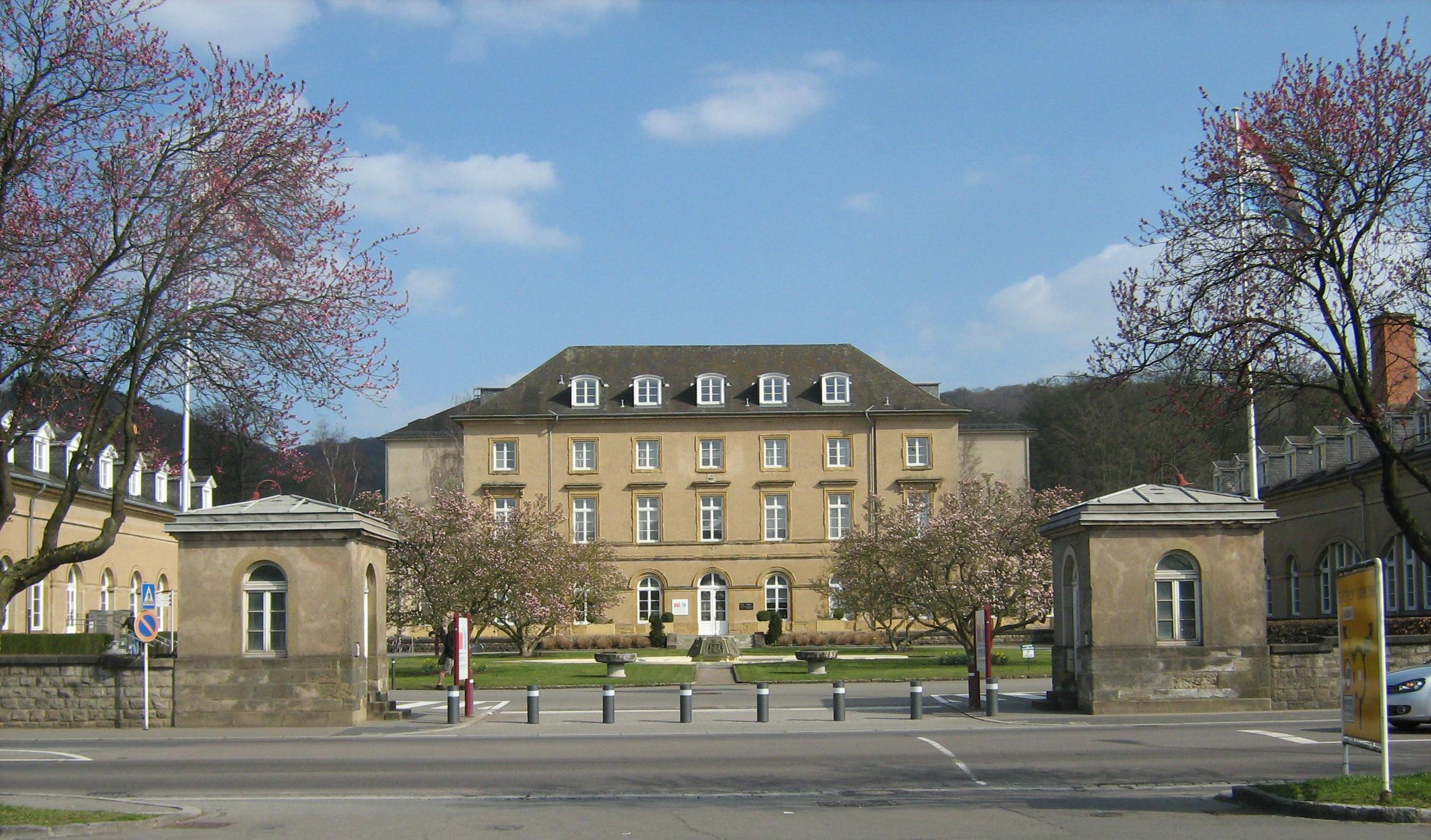 Walferdange Castle, located in the small town of Walferdange in central Luxembourg, dates from 1824 when William I of the Netherlands who was also Grand Duke of Luxembourg built it as a stud farm. The castle is one of the campuses of the University of Luxembourg, housing the Faculty of Language and Literature, Humanities, Arts and Education.
Walferdange Castle, located in the small town of Walferdange in central Luxembourg, dates from 1824 when William I of the Netherlands who was also Grand Duke of Luxembourg built it as a stud farm. The castle is one of the campuses of the University of Luxembourg, housing the Faculty of Language and Literature, Humanities, Arts and Education.
Notre-Dame Cathedral
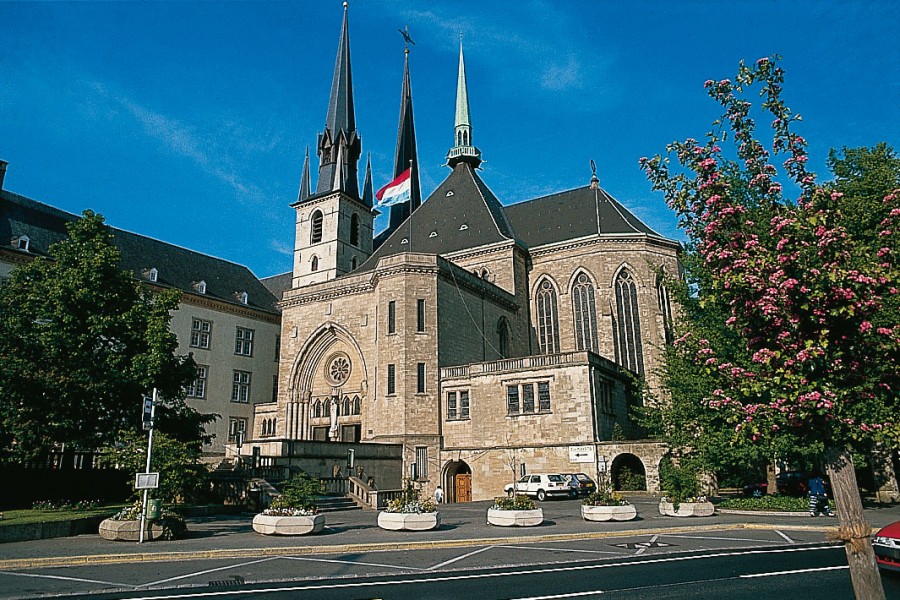 Notre-Dame Cathedral is the Roman Catholic Cathedral of Luxembourg City, in southern Luxembourg. It was originally a Jesuit church, and its cornerstone was laid in 1613. It is the only cathedral in Luxembourg. The church is a noteworthy example of late gothic architecture; however, it also has many Renaissance elements and adornments. At the end of the 18th century, the church received the miraculous image of the Maria Consolatrix Afflictorum, the patron saint of both the city and the nation. Around 50 years later, the church was consecrated as the Church of Our Lady and in 1870, it was elevated by Pope Pius IX to the Cathedral of Notre-Dame. At the cemetery of the cathedral is the National Monument to the Resistance and to the Deportation. The centerpiece of the monument is the famous bronze monument by the 20th century Luxembourgish sculptor Lucien Wercollier called The Political Prisoner. The cathedral was expanded and enlarged from 1935 to 1938.
Notre-Dame Cathedral is the Roman Catholic Cathedral of Luxembourg City, in southern Luxembourg. It was originally a Jesuit church, and its cornerstone was laid in 1613. It is the only cathedral in Luxembourg. The church is a noteworthy example of late gothic architecture; however, it also has many Renaissance elements and adornments. At the end of the 18th century, the church received the miraculous image of the Maria Consolatrix Afflictorum, the patron saint of both the city and the nation. Around 50 years later, the church was consecrated as the Church of Our Lady and in 1870, it was elevated by Pope Pius IX to the Cathedral of Notre-Dame. At the cemetery of the cathedral is the National Monument to the Resistance and to the Deportation. The centerpiece of the monument is the famous bronze monument by the 20th century Luxembourgish sculptor Lucien Wercollier called The Political Prisoner. The cathedral was expanded and enlarged from 1935 to 1938.
Philharmonic Orchestra
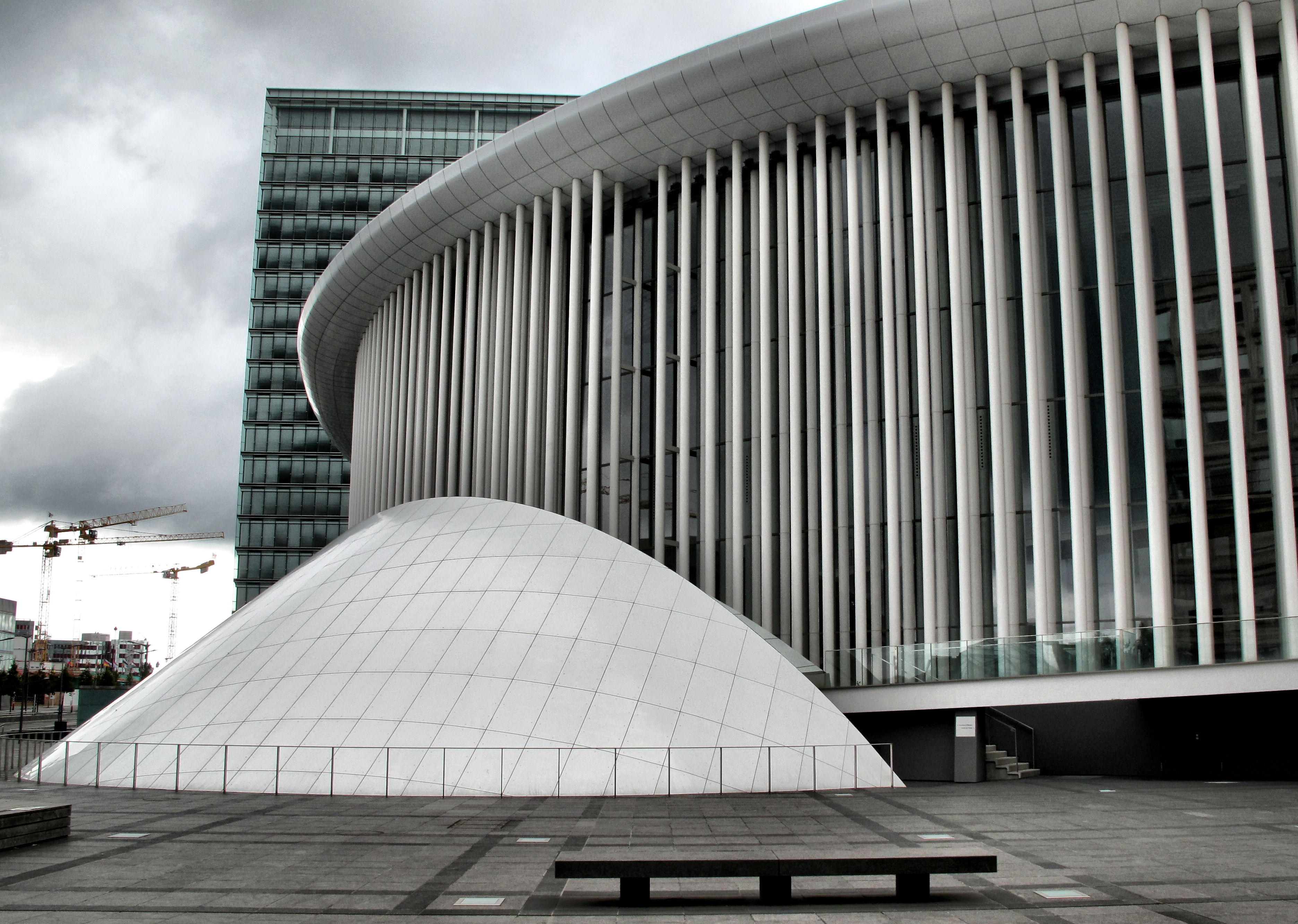 The Philharmonic of Luxembourg is the concert hall of the Orchestre Philharmonique du Luxembourg. Representing the multicultural character of Luxembourg, this outstanding piece of contemporary architecture hosts great conductors, soloists and orchestras from all over the world. The remarkable quality of its acoustics and the close collaboration with significant and well-known musical personalities has made the Philharmonic Luxembourg known as one of the best concert halls in Europe.
The Philharmonic of Luxembourg is the concert hall of the Orchestre Philharmonique du Luxembourg. Representing the multicultural character of Luxembourg, this outstanding piece of contemporary architecture hosts great conductors, soloists and orchestras from all over the world. The remarkable quality of its acoustics and the close collaboration with significant and well-known musical personalities has made the Philharmonic Luxembourg known as one of the best concert halls in Europe.
Passerelle Viaduc
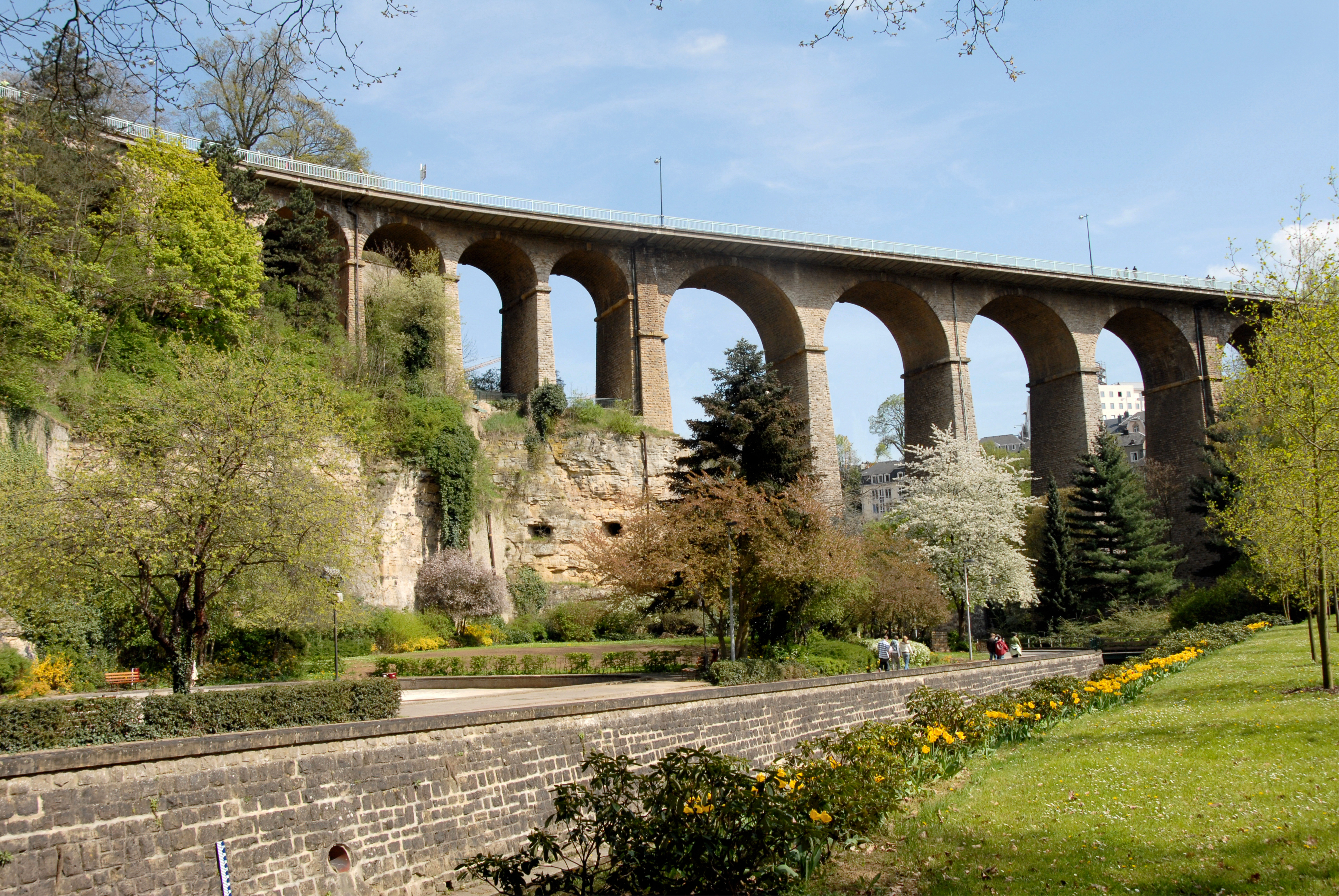 The historic bridge, Passerelle Viaduc, definitely offers to its visitors an overdose of picturesque and panoramic views of the Luxembourg City. Built between 1859 and 1861 by the British company Waring Brothers, the Passarelle Viaduc connected the city center with the new railway station. Known also as the Old Bridge, Passerelle Viaduc is well worth a visit, even if just for the fantastic photo opportunities.
The historic bridge, Passerelle Viaduc, definitely offers to its visitors an overdose of picturesque and panoramic views of the Luxembourg City. Built between 1859 and 1861 by the British company Waring Brothers, the Passarelle Viaduc connected the city center with the new railway station. Known also as the Old Bridge, Passerelle Viaduc is well worth a visit, even if just for the fantastic photo opportunities.
Kirchberg quarter
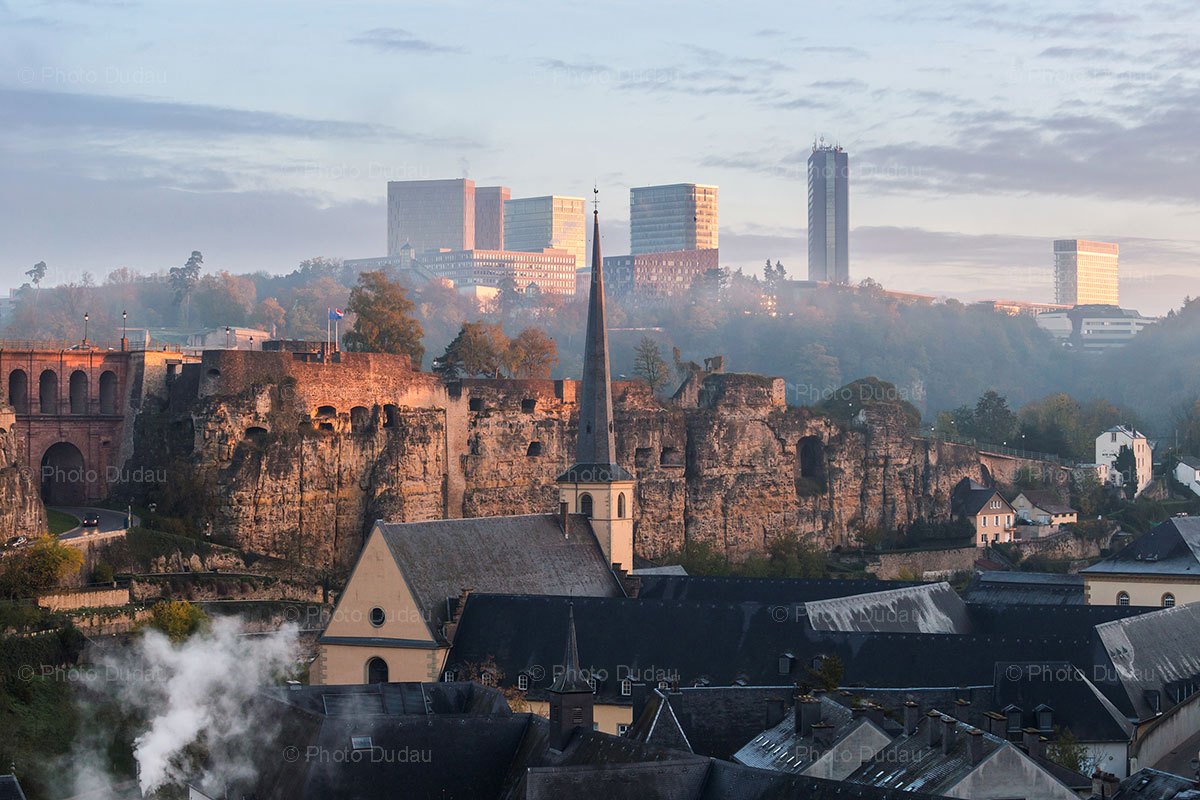 Kirchberg is a quarter in north-eastern Luxembourg City, in southern Luxembourg. It consists of a plateau overlooking the north-east of the historical city centre, Ville Haute, connected to the rest of the elevated city by the Grand Duchess Charlotte Bridge, which spans the Pfaffenthal valley. It is often referred to as the Kirchberg plateau, or simply, the Kirchberg by Luxembourg residents. Kirchberg district is the place for modernity and contemporary art. Visitors have the chance to explore this setting of the European Institutions, the European Investment Bank, the Luxembourg Chamber of Commerce, as well as sports centers and parks in Luxembourg.
Kirchberg is a quarter in north-eastern Luxembourg City, in southern Luxembourg. It consists of a plateau overlooking the north-east of the historical city centre, Ville Haute, connected to the rest of the elevated city by the Grand Duchess Charlotte Bridge, which spans the Pfaffenthal valley. It is often referred to as the Kirchberg plateau, or simply, the Kirchberg by Luxembourg residents. Kirchberg district is the place for modernity and contemporary art. Visitors have the chance to explore this setting of the European Institutions, the European Investment Bank, the Luxembourg Chamber of Commerce, as well as sports centers and parks in Luxembourg.


